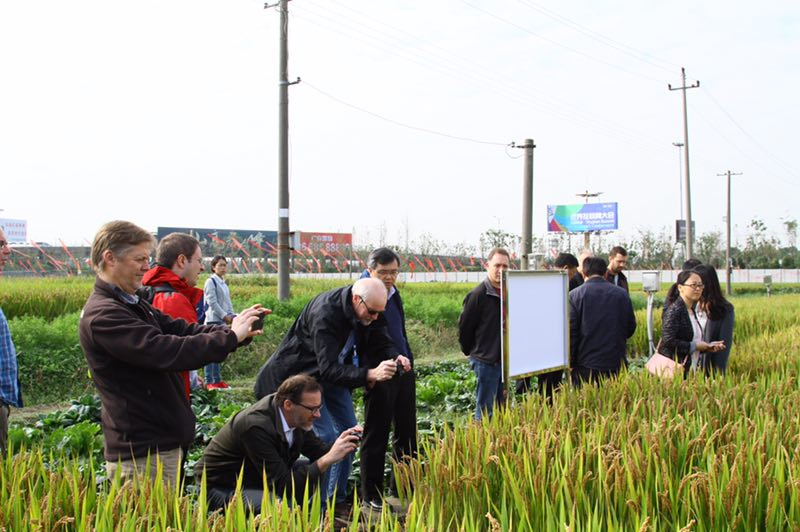9th December 2016 Shanghai
Tackling the ‘superbug’ that threatens the future of medicine

Antimicrobial Resistance (AMR for short) could be the biggest killer you’ve never heard of. Last year an estimated 700,000 people around the world died from AMR. And this figure is increasing rapidly. If left unchecked, deaths will increase to 10 million per year by 2050. To put that in context, 8.2 million people globally died from cancer last year.
So what is AMR? You are more likely to have heard of it as a ‘superbug’, a mutation of an existing pathogen that can no longer be treated. To explain, antimicrobial drugs are medicines used to treat infections, such as those caused by bacteria (antibiotics), viruses (antivirals), fungi (antifungals) and parasites (including antimalarials). Antimicrobial Resistance arises when the micro-organisms which cause infections, e.g. bacteria, can survive exposure to a medicine that would normally kill them or stop their growth.
The consequences of AMR are bleak. Diseases such as tuberculosis or malaria, which had become less deadly due to advances in modern medicine are now developing new, multidrug-resistant strains. To a certain extent AMR is inevitable; the mutation, or selection of intrinsic resistance, described is a natural genetic process. We can limit the rate of this mutation/selection by reducing the exposure to drugs. Unfortunately, the reverse has been happening: the use of antimicrobials has been rapidly increasing.

The UK government is aware of this risk and has issued a call to action. The recent O’Neill Review on Antimicrobial Resistance presented ten recommendations to tackle AMR. China has answered the UK’s call and raised AMR as a priority at the recent G20 meeting of world leaders.
Some of the proposals to combat AMR focus on changing the behaviour of individuals, such as improving hygiene and reducing the unnecessary prescription of antibiotics. Others address the supply-side, such as developing better incentives to develop new antibiotics. But one neglected area has been the effect of antimicrobials in the environment.
With this in mind a group of 70 UK and Chinese scientists met in Jiaxing, Zhejiang Province earlier this month. The workshop was organised by the UK’s Centre for Ecology and Hydrology and China’s Institute of Urban Environment.
Joining the event to represent the Science and Innovation Network, I learned the full extent of the problem. There is a tendency to think of an antibiotic as being a tablet, which is consumed and then absorbed into the body. But the majority of antibiotics we take are excreted un-metabolised. This is even more pronounced in farm animals, which excrete 75-90% of the antibiotics they ingest. These antibiotics then enter the manure, sewage systems and water sources.
Another eye-opener for me was the sheer amount of antibiotics used in farming. Of the 36 most used antibiotics in China, 84% of use is on the farm rather than by humans. Antibiotics are used in the feed (often to prevent infections but sometimes simply to promote growth). Other uses include injections given to help cows produce milk and antibiotics used in footbaths. Inadequate waste water treatment and over-use can result in large quantities of these antibiotics being detected in soils and crops.
Progress is being made. China recently banned the use of the antibiotic colistin as a feed additive following joint UK-China research led by Cardiff University and supported by the Newton Fund. Colistin is used as a ‘last resort’ antibiotic in humans and so its use in animal feed was speeding up the resistance of bacteria to this potentially life-saving drug. The UK continues to work with China and there is much more to be done – around 20,000 tons of antibiotics are consumed in China each year, more than double any other country.
But farming is not the only source of antibiotics in the environment. The biggest polluter is often the factory where the drugs are made. Many production facilities around the world lack adequate waste treatment facilities, with intense concentrations of antibiotics being discharged into the local water.

So what is the effect of all these antibiotics being absorbed into the water supply, soil and crops? The purpose of the workshop in Jiaxing was to find out. Too little is currently known about how the presence of antibiotics in the environment contributes to AMR. Scientists from a dozen UK universities and their Chinese counterparts compared research and planned joint projects. The Centre for Ecology and Hydrology will continue to co-ordinate UK-China collaboration in the field. An MoU signed with the Institute of Urban Environment will ensure future collaboration is strong.
My team, the Science and Innovation Network exists to support such collaborations. Combined UK-China research has been proven to have more impact that UK-only or China-only research. This partnership will hopefully shed further light on how concerned we should be about antimicrobial drugs entering the environment and what we can do to counter it.